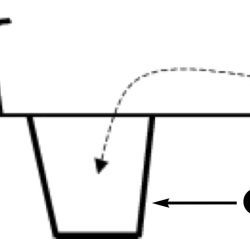Source Institutions
Source Institutions
Add to list Go to activity
Activity link broken? See if it's at the internet archive

In this activity (p.6-10 of PDF), learners use different methods for hunting minibeasts (bugs). Learners can either make traps or simply look for minibeasts under stones and logs. Learners can record the number of minibeasts they find. Use this activity to observe bugs and compare minibeasts found in different habitats. Safety note: Learners should always wash their hands before and after handling animals.
- Under 5 minutes
- 45 to 60 minutes
- free per group of students
- Ages 6 - 11
- Activity, Lesson/Lesson Plan
- English
Quick Guide
Materials List (per group of students)
- Tally chart
- Container for holding minibeasts that are caught
- (Optional) Pooter trap materials: transparent plastic (neoprene) tubing with an 8 mm inside diameter, soft rubber tubing with a 6 mm inside diameter, a tubing adapter (available from most science equipment suppliers), a piece of fine mesh
- (Optional) Bug brolly trap materials: umbrella and stick
- (Optional) Pitfall trap materials: plastic cup
- (Optional) Tullgren funnel materials: garden sieve, paper towels, bowel, lamp
Subjects
-
Life Sciences
-
Diversity of Life
- Animals
- Classification
-
Ecology
- Biodiversity
-
Diversity of Life
-
Mathematics
-
Data Analysis and Probability
- Data Collection
- Data Representation
-
Data Analysis and Probability
Informal Categories
- Animals
- Collecting
- Nature and Environment
- Outdoor Activity
Audience
To use this activity, learners need to:
- see
- read
- be mobile
- touch
Learning styles supported:
- Involves hands-on or lab activities
Other
This resource is part of:
Access Rights:
- Free access
By:
- Gresty, Karen ; Smithers, Peter ; Ebdon, Leslie ; Jay, Chantelle ; Jacolly Puppet Theatre
Rights:
- All rights reserved, Biotechnology and Biological Sciences Research Council,
Funding Source:
- Biotechnology & Biological Sciences Research Council
